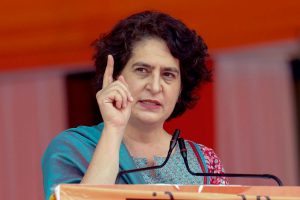Rajendra Singh, fondly called “Paani Baba” (waterman), is an acclaimed water conservationist. He is credited with bringing back water adequacy to villages, apart from fighting against illegal mining and taking up the cause of clean Ganga and Yamuna rivers.
This is the outcome of almost half a century’s untiring work of training people on digging up water bodies, rejuvenating dried up ones, and educating them on farm techniques and suitability of crop patterns. Singh and his team, Tarun Bharat Sangh (TBS), have toiled hard with locals to create 15,800 water bodies and rejuvenate 23 rivers in various states of the country.
Advertisement
His water-centric crusades are not restricted to India; his missions for restoration of water adequacy with indigenous knowledge-based revival or building water bodies have already left a mark in over 15 countries. The 65-year-old Magsaysay award winner is now on a two pronged mission – working in fields with locals and on campuses with academia – for propagating indigenous knowledge systems among the younger generation. Satish Kumar Sharma of The Statesman talks to the versatile environmentalist on his work and persona.
Q: Tell us about your early life.
A: I was born on 6 August 1959 in Daula village of Baghpat district in Uttar Pradesh. I came to Rajasthan 46 years ago, and became a follower of Vinoba Bhave and J P Narayan. I joined JP’s Tarun Shanti Sena. I did my first social welfare task in Jaipur in 1974, helping 44 families whose huts were burnt in a slum near a university.
Q: When did you take up water conservation as your mission?
A: Fighting for this cause was born out of the need of the people. Since I am an Ayurvedic graduate, I used to treat villagers in Gopalpura where people were suffering from night blindness and other troubles. However, Maangu Kaka, my guiding soul in water conservation, whom I treated for night blindness, said, “Rajendra! We do not need your qualification or medicines, we need water, so give us water then there will be no diseases among us.” Then this gentleman, whom I have always regarded as my guru for imparting indigenous knowledge, taught me lessons on geographical and geological characters of the area and composition and types of earth crust, which guided me in selection of site for making water bodies, setting its course-route and deciding shapedesign of dam/johad etc. What he taught me in a typical indigenous method proved to me as good as a PhD in ‘natural engineering and geo-hydro science’. Our overall efforts restored water adequacy in 2,500 villages spread over 19 districts, transforming lives for the better in more than 12.5 lakh rural households.
Q: Didn’t you work for the upliftment of Ganga-Yamuna?
A: I have held many rejuvenation programmes for both the rivers. Around 2005-07, land along the banks of the Yamuna in Delhi was being given to companies, we fought against it in the Supreme Court. However, then Union minister Arjun Singh had persuaded then chief minister Sheila Dikshit and the Lt Governor for conceding to our demands. Accordingly, the Delhi government cancelled land deals of 370 companies and imposed a moratorium on allotment of the river land. In 2008, renowned river environmentalist Prof G D Agrawal, former professor of IIT Kanpur, took me in for the cause of a clean and richly flowing Ganga. We led a successful yatra from Gangotri to Uttarkashi in 2008-09. The Centre accepted our demands, declared the Ganga as a national river, stopped all work on three dams along the Bhagirathi, assured of no new dams on this river, declared the stretch from Gaumukh to Uttarkashi as an eco-sensitive zone and inducted me in the National Ganga Basin Authority (2009- 2014).
Q: You also worked against illegal mining and for rehabilitated dacoits?
A: Yes, we did resist illegal mining. After gaining success in Gopalpura, people from nearby villages approached me to replicate the work in their respective areas. I went there, and dug one ‘johad’ each in Palpur, Kilwadi and Khilpad villages. However, due to mining, the water from these johads receded down into mining pits. This emerged as a major issue as 478 mines were running in a 200 square km area along Sariska. We moved the Supreme Court for closure of these mines. The court ordered the closure (October 1991). Encouraged by this success, we made efforts for closing stone mines along the Aravali mountain range traversing four states – Delhi, Haryana, Rajasthan and Gujarat. In fact, Parliament enacted the Aravali Protection Act 1992. Another notable feature in our journey to success was the return of 3,500 dacoits in Dholpur, Karauli districts, to mainstream society. A woman (Bhagwati) of Chondakiya village, who was bought by dacoit chieftain Jagdish Gujjar alias Nirbhaya Singh for being his wife, very tactfully planned with us not only for rejuvenation of water resources in her husband’s native village, but also brought her dacoit husband back home from the Chambal ravines. Bhagwati and I persuaded Nirbhaya to lay down arms. He not just accepted our pleas, but also joined us in spreading the water mission and rehabilitation of fellow dacoits in mainstream life.
Q: What do you feel about your work leaving a mark across the globe?
A: I am happy my work is not just restricted to India. We have made strides in many other countries like Egypt, Kenya and Somalia. People in many villages in these countries have already adopted and launched, under my team’s guidance, our programmes of water harvesting and conservation.











